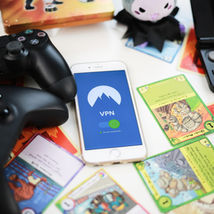Safely Navigating Popular Online Tech Trends With Your Kids

Keeping kids safe online is proving harder as technology advances. In 2019, roughly 95% of children aged 3 to 18 had internet access at home. This has undoubtedly increased with the rise of at-home schooling during the pandemic. Access to the internet for kids can open up the world of education while connecting them with their peers. However, as technology continues to advance, so do the tactics used by hackers, bullies, swindlers, and criminals, so you must keep a close eye on what your youngsters do online.
While it used to be easy enough to just block certain websites, now kids have endless choices of online activities. From purchasing cryptocurrency to posting on TikTok, kids on the internet are difficult to harness. In the future, they may even be able to use the metaverse to interact with people on the other side of the world. This guide on common tech trends will allow you to safely navigate them with your children.
Safely Navigate the Metaverse and Social Media
Parents who watch the news or keep up on tech trends have likely heard about the metaverse, a connected network of 3D worlds that people of all ages can explore. While within the metaverse, visitors can do almost anything, including attend events, design fashion items, create their own store, buy digital art, and meet new people. Since the metaverse is relatively new, there are some dangers and risks, especially for children.
For starters, some parts of the metaverse require age verifications. However, since it is so new, many of these verifications are unreliable. If left unchecked, your kids could stumble into somewhere dangerous. There is always the chance that people intentionally distribute false information that could influence your children. On top of that, in order to use a large portion of the metaverse, you must wear a VR headset which can lead to nausea and dizziness over time for anyone. Kids wearing VR headsets are less likely to recognize when it’s time to take a break and stretch — and some may even lack the motor skills to properly detach the headset if uncomfortable.
Parents who allow their kids to enter the metaverse should make it a point to set limitations for how long they can use it each day in order to protect their mental and physical health. You can also jump into the metaverse yourself so you can get a feeling for how it works and what kids might see, and then set ground rules for usage. Finally, continue to learn about the metaverse as new information becomes available. The new policies and changes that you discover could lead to a modification to the rules you set.
The metaverse is essentially a branch of social media, and the same rules should be applied to sites like Facebook and Instagram. Just because social media is a little less personal and immediate, this doesn’t mean that strangers can’t reach out to your kids in DMs, comments, or influential posts. There are even live streaming sites, like Twitch, that are popular with kids — making it harder to monitor content that is happening in real-time. Set time limits each day, educate your kids on the risks, and activate privacy settings to ensure that they can't see what they shouldn’t.
Share Information Online With Caution, Especially Your DNA
One of the biggest risks of being online is the chance that hackers or cybercriminals might get their hands on your private information and cause havoc. Social security numbers can be used to take out fraudulent loans in your — or your kid’s — name, while addresses and emails can be sold on the black market or used to commit future scams. This issue has been complicated with new tech trends, especially online genetic testing services.
Services like AncestryDNA and 23andMe allow you to take a DNA test and send it to them so you can find out your ancestry and family history. The problem is that if a criminal gets their hands on your DNA or the information that you share on the website, then you and your kids could land in a heap of trouble. Gene information can be used to forge paternity documents, uncover private health information, and be used as political espionage. It can also be sold illegally to those looking to commit identity theft or even biological warfare.
It is great that your kids want to learn about their ancestry, but parents need to be a part of the process. Look for websites that make their privacy and security policies known. They should state exactly what they do with your data and how they protect your information. Most genetic testing services also leave the parents responsible for making the executive decision to involve kids in the process. Minors can’t technically consent to have their DNA tested. As a parent, you need to be aware of the risks and rewards when making that decision for them.
Of course, the best way to secure your family’s information is to use a smart and strong password for every web service you use, including those genetic testing services. Good passwords should include a combination of letters, numbers, and special characters. If you ever need to send personal information online, consider enclosing it in a password-protected PDF that cannot be opened and stolen without the proper code.
Teach Kids About Using Money Online
As your children get older, they will likely have an interest in making money online and investing so they can set up their future. A current example that many people are into is the trend of Non-Fungible Tokens (NFTs). Essentially, NFTs are a form of cryptocurrency that are in the blockchain, but, unlike bitcoins which can be switched out, NFTs are completely unique and cannot be changed. The fun thing about NFTs is that they can come in many forms, from a piece of artwork to a piece of music. This makes them alluring to kids.
However, like bitcoin, NFTs are not yet recognized by federal laws. If you or your kids are scammed, then you may not have the same protections as you do with standard currency. Before you buy one, verify the NFT by checking marketplaces and reverse-searching the image on Google to ensure that it is unique. You can also use this as an opportunity to teach kids to diversify an investment portfolio with a bit of everything, from cryptocurrency and stocks to gold and silver.
When exchanging money on any website, it is important to check that the website is secure by checking for the “s” at the end of “HTTP” in the address bar. Also, online transactions are best made online and not via public Wi-Fi whenever possible. Hackers can set up fake networks. If you connect to them, they can access your card information and breach your or your kids’ computer or smartphone.
The bottom line is: as technology and the internet continue to evolve, parents should be more watchful than ever of their kids' online behaviors. Consider these tips and stay ahead of the times.




















